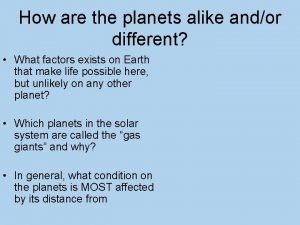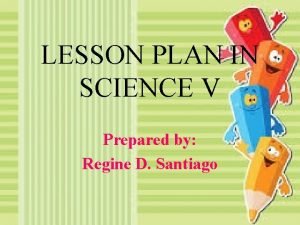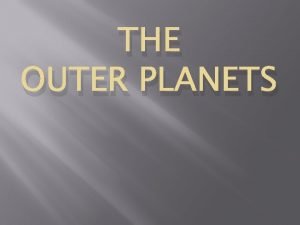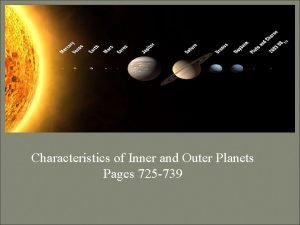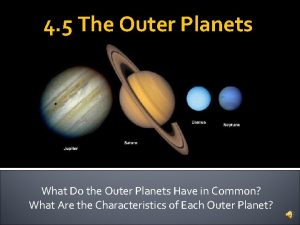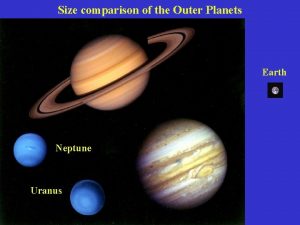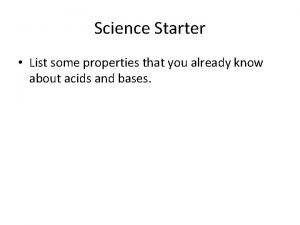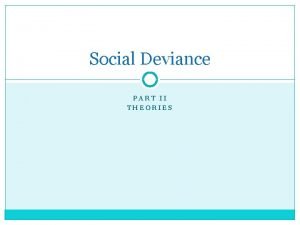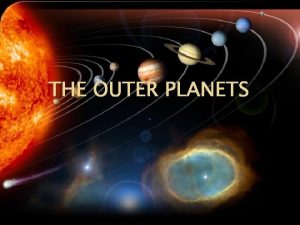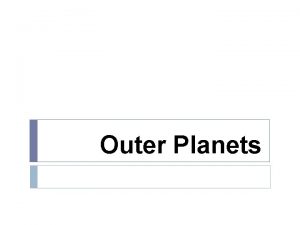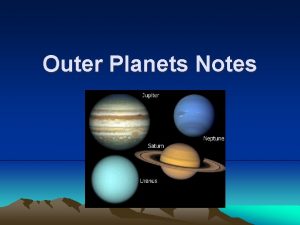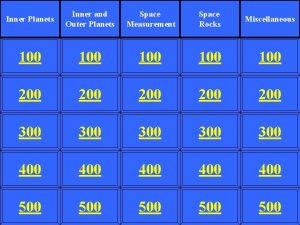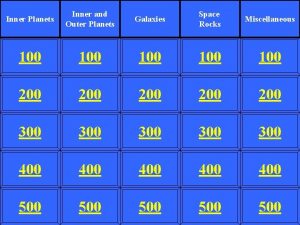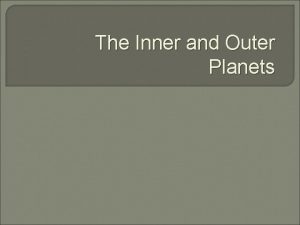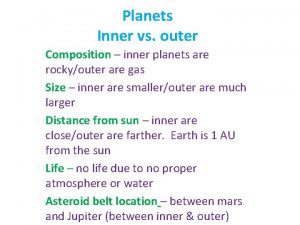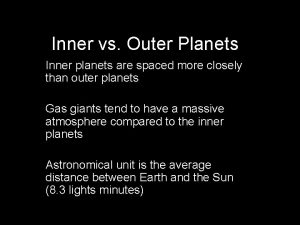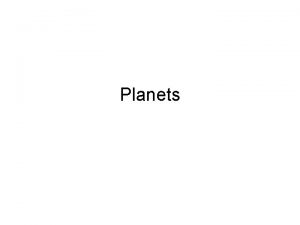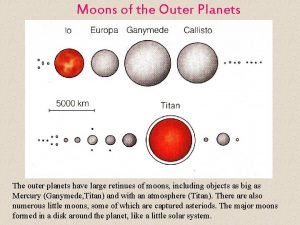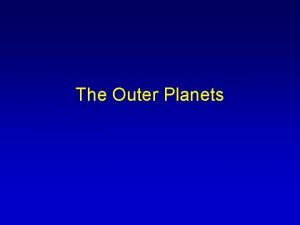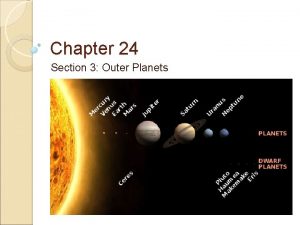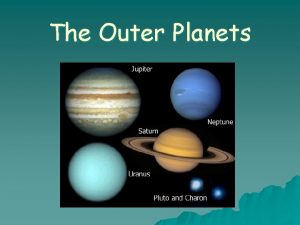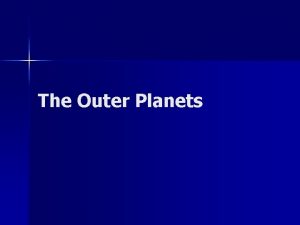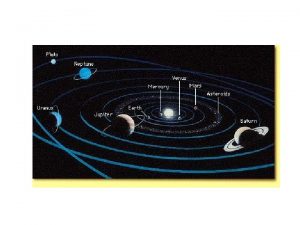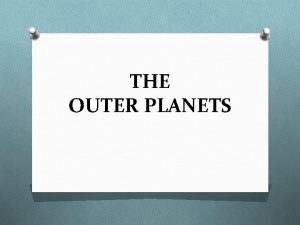THE INNER AND OUTER PLANETS The Inner Planets






















- Slides: 22

THE INNER AND OUTER PLANETS


The Inner Planets Terrestrial High temperatures Closer to the Sun Closer to each other

Mercury Closest to the Sun Only 88 days to orbit Many craters Temperature extremes 400 C during day, -180 at night Basically no atmosphere

Mercury is not the hottest planet even though it is the closest to the Sun

Venus Earth’s sister planet Morning and evening star Thick atmosphere of CO 2 and Sulfur Longer day than year Spins opposite than other planets Over 500 C all the time Hottest planet in solar system

Venus The atmosphere of Venus contains a high percentage of carbon dioxide that holds heat in the planet's atmosphere. The atmosphere of Venus is made of thick clouds of sulfuric acid and carbon dioxide, which makes it very hot.

Earth Home sweet home Only planet with sustained life Hydrosphere (water) Atmosphere made up of N, O, CO 2 Comfy temps

Earth has fewer craters than other terrestrial planets because of its atmosphere (upper) which destroys meteorites.

Mars Frozen polar CO 2 caps Smaller than Earth Slightly longer day and year Very cold Largest mountain in solar system Olympus Mons Thin atmosphere

Mars has frozen polar ice caps and is known as the most like Earth.

Asteroid Belt Separates the inner and outer planets Possibly an annihilated planet Most asteroids hang out here

Outer Planets Gas giants No solid surface, just thick atmosphere All very large Very far apart from each other All have rings

Jupiter Could hold 1300 Earths Almost big enough to be a star 12 EY = 1 Jovian year 1 Jovian day = 12 EH Huge storms Great red spot “hurricane” larger than Earth Some moons may have water

Jupiter is largest planet in the solar system. Jupiter can fit all of the other planets inside this gas giant and there would still be space left over.

Saturn 29 years to orbit Large rings made of ice and dust 10 hour day Possibly still forming Tilts itself

Saturn is known for its’ rings and is the least dense planet. It would float in a swimming pool if we had one big enough to put this planet into.

Uranus Blue in color due to methane gas 84 years to orbit Rotates sideways Very cold -250 C

Uranus also has rings, but lies on its side so the rings go around it vertically.

Neptune Methane atomosphere 164 years to orbit -250 c temps 30 times farther from the sun than Earth

Neptune is blue because it is mostly made of a gas called methane

Pluto is a draft planet, because of its size and irregular orbit.
 What separates inner and outer planets
What separates inner and outer planets What separates the inner planets and outer planets
What separates the inner planets and outer planets Inner planets and outer planets
Inner planets and outer planets Four outer planets in order
Four outer planets in order What are the inner and outer planets
What are the inner and outer planets What separates the inner and outer planets
What separates the inner and outer planets Solar system inner and outer planets
Solar system inner and outer planets Andor planet
Andor planet Inner outer planets venn diagram
Inner outer planets venn diagram By listening to my inner defender voice i can be sure that
By listening to my inner defender voice i can be sure that Inside pluto planet
Inside pluto planet Jupiter is noticeably oblate because:
Jupiter is noticeably oblate because: Characteristics of jupiter planet
Characteristics of jupiter planet What do the four outer planets have in common
What do the four outer planets have in common Characteristics of outer planets
Characteristics of outer planets Earth neptune size comparison
Earth neptune size comparison Outer planets
Outer planets Characteristics of outer planets
Characteristics of outer planets The two outer jovian planets appear bluish in color because
The two outer jovian planets appear bluish in color because Inner core and outer core
Inner core and outer core The crust the mantle and the core
The crust the mantle and the core Inner and outer controls work against deviance
Inner and outer controls work against deviance Which type of wave can penetrate the outer and inner core *
Which type of wave can penetrate the outer and inner core *







